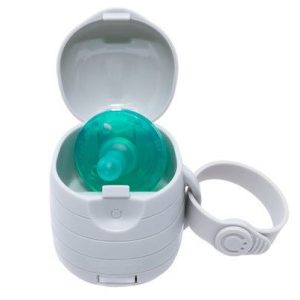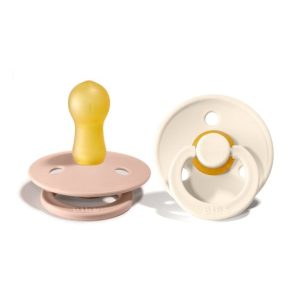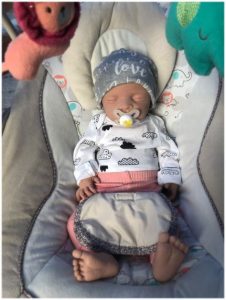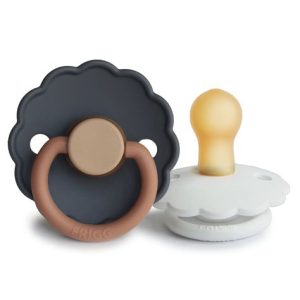Physical Address
304 North Cardinal St.
Dorchester Center, MA 02124
Physical Address
304 North Cardinal St.
Dorchester Center, MA 02124

What age should you take away a pacifier? Pacifiers are a common soother for babies. They can be calming and help babies fall asleep. However, there comes a time when it’s best to wean your child off the pacifier. This article will explore the benefits and drawbacks of pacifier use, and provide guidance on when and how to wean your child.
Sucking is a natural reflex for babies. It can be calming and help them self-soothe. Pacifiers can be especially helpful for quieting fussy babies or during times of separation anxiety.
Sucking can help numb pain caused by teething or minor discomfort.
Pacifiers may help some babies fall asleep and stay asleep for longer stretches.
Studies suggest that pacifier use during sleep may be a factor in reducing the risk of Sudden Infant Death Syndrome (SIDS). Always follow safe sleep practices to reduce the risk of SIDS.
It’s important to note that the American Academy of Pediatrics (AAP) recommends offering a pacifier at naptime and bedtime to healthy babies.

Ear Infections: Frequent or prolonged pacifier use has been linked to an increased risk of ear infections in some babies.
Breastfeeding Difficulties: For newborns, pacifier use in the early weeks may interfere with breastfeeding. This is because sucking on a pacifier is different than sucking at the breast.
Speech Development: Prolonged pacifier use after a certain age may be linked to speech delays in some children.
Dental Problems: Persistent pacifier use past toddlerhood can cause dental problems like misaligned teeth or an overbite.
If you are concerned about any of these drawbacks, talk to your pediatrician. They can advise you on the best course of action for your individual child.
There’s no one-size-fits-all answer to this question. Every child develops at their own pace. However, the AAP recommends weaning your child from the pacifier by around 12 months old. Here are some signs your child might be ready to ditch the pacifier:

Weaning should be a gradual process. Here are some tips to help make the transition smoother:
Start Slowly: Gradually reduce pacifier use over time. You can start by limiting pacifier use to naptime and bedtime.
Offer Distractions: When your child reaches for the pacifier, offer a distraction like a cuddle, a toy, or a teething ring.
Be Patient: Weaning can take time. Be patient and consistent with your approach.
Positive Reinforcement: Praise your child for going without the pacifier. Positive reinforcement can be more effective than punishment.
Seek Help: If you’re struggling to wean your child, talk to your pediatrician. They can offer additional guidance and support.
Remember, the goal is to wean your child gently and gradually. Be patient and celebrate their progress along the way.
Pacifiers can be a helpful tool for soothing and comforting babies. However, there comes a time when it’s best to wean your child off the pacifier. By following the tips in this article, you can help your child make a smooth transition and avoid any potential drawbacks of pacifier use.

There’s no magic age for pacifier removal. Every child develops at their own pace. However, the American Academy of Pediatrics (AAP) recommends weaning your child from the pacifier by around 12 months old.
Here are some signs your child might be ready to ditch the pacifier:
These signs can indicate your child is getting ready for a transition.

Weaning should be a gradual process. Here are some tips to make it smoother:
Start Slow: Gradually reduce pacifier use over time. You can begin by limiting it to naptime and bedtime.
Offer Distractions: When your child reaches for the pacifier, offer a substitute like a cuddle, a favorite toy, or a teething ring.
Patience is Key: Remember, weaning can take time. Be patient and consistent with your approach.
Positive Reinforcement: Praise your child for going without the pacifier. Positive reinforcement can be more effective than punishment.
Seek Help If Needed: If you’re struggling to wean your child, talk to your pediatrician. They can offer additional guidance and support.
Remember, the goal is to wean your child gently and gradually. Celebrate their progress along the way!
Safe Sleep Practices: Always follow safe sleep practices to reduce the risk of SIDS. These include placing your baby on their back on a firm sleep surface in a crib with a fitted sheet.
Talk to Your Pediatrician: If you have any concerns about pacifier use or weaning, talk to your pediatrician. They can advise you on the best course of action for your individual child.

There’s no single right answer to the question of “when” to wean a pacifier. Every child develops at their own pace. However, the American Academy of Pediatrics (AAP) offers some general guidance:
Around 6 months: This is a good time to start thinking about weaning, especially if you’re concerned about breastfeeding or ear infections. You can begin by limiting pacifier use to naptime and bedtime.
By 12 months: The AAP recommends weaning your child from the pacifier by around 1 year old. This is because prolonged pacifier use after this age can potentially lead to dental problems or speech delays.
Remember, these are just guidelines. It’s important to watch your child for signs that they might be ready to give up the pacifier. Here are some tips:
If you notice any of these signs, you can start the weaning process.
For more specific advice, consult a healthcare professional. They can help you create a weaning plan that’s right for your child.
The most important thing is to follow your child’s lead and create a weaning plan that works for your family.